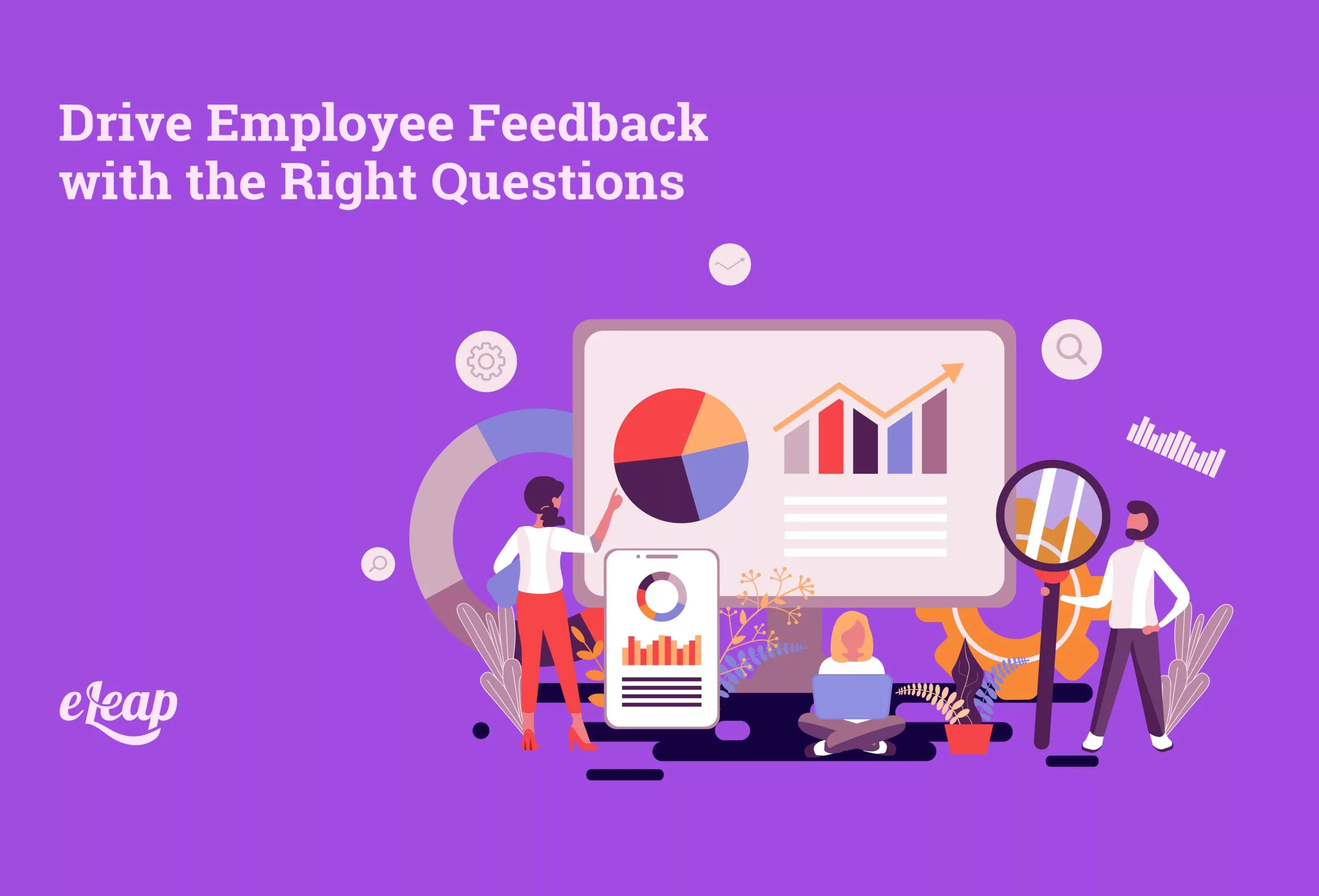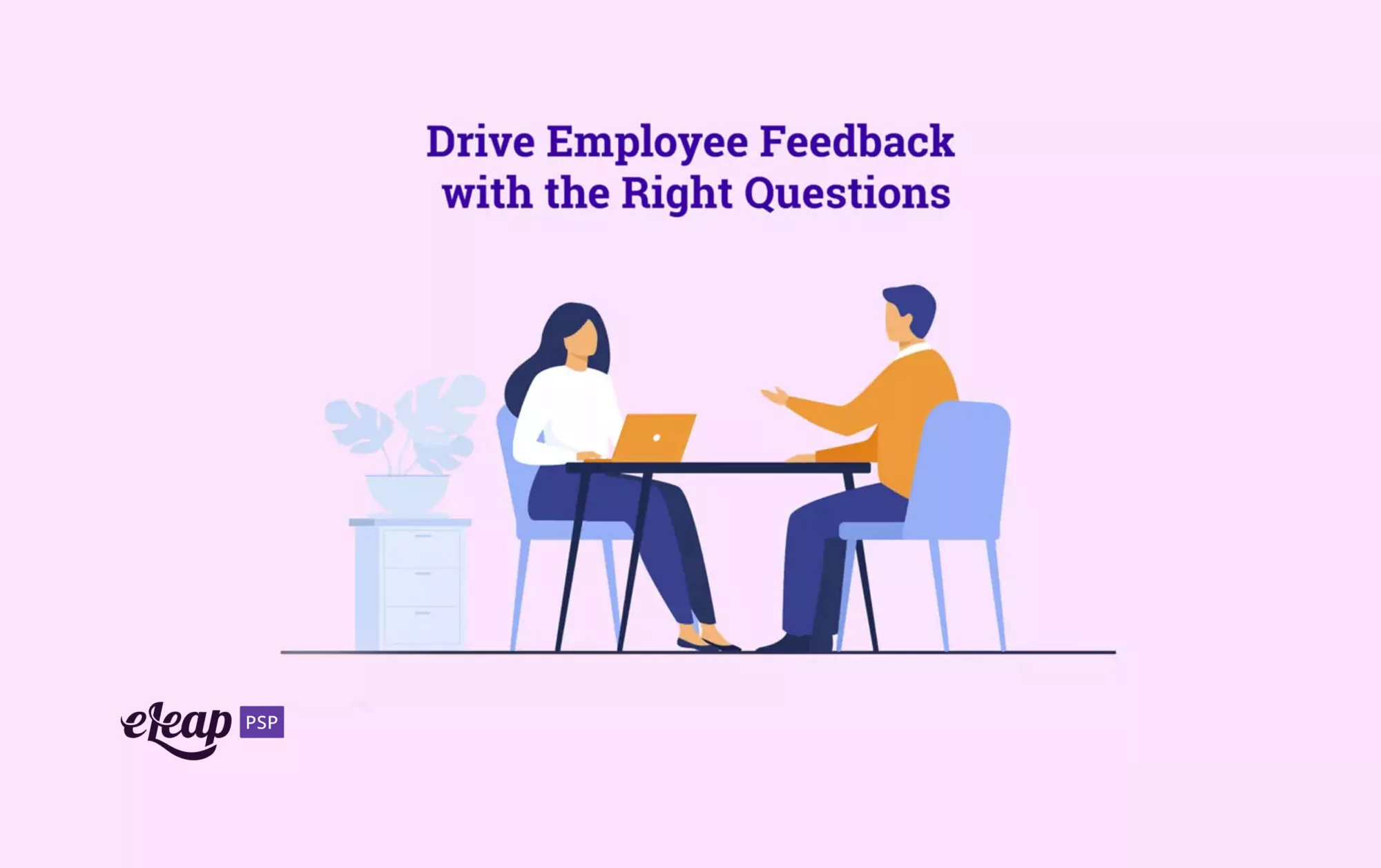Drive Employee Feedback with the Right Questions

As a business leader, your goal is to build a thriving organization, just as much as it is to serve your customers or clients. In fact, without a healthy, growing company, it becomes impossible to achieve your mission of delivering the right products or services to your audience. In the quest to create that organization, employee feedback should play a pivotal role.
Too often, business leaders get wrapped up in their own heads. We focus on results, on progress toward predefined milestones, on KPIs and metrics. That tunnel vision can limit your ability to create a thriving business, but getting feedback from your employees can help you innovate, think creatively, and more.

What do you feel is needed to help create more diversity on your team?
When hiring from the outside, we often focus on finding someone who fits the current company culture. That means looking at what we have on the team and then hiring someone who fits the mold. Sadly, that often means creating teams that lack diversity. It’s important that when you hire, you do so intending to create a more diverse team that still manages to work together.
What gives you hope?
Never underestimate the power of hope. Without it, life can be bleak, even when there doesn’t seem to be anything overtly “wrong”. Employees need to hope for the future. It gives them the ability to deal with difficulties today if there is a chance that tomorrow will be better.
It also helps to normalize the idea that having a bad day from time to time is acceptable, even common. We all have them, and we all hope that tomorrow will be better. By learning what gives an employee hope, you can also find ways to build a stronger organization and instill more confidence in employees.
How can I help you?
Employees must feel supported and valued. There are few better ways to do that than by acknowledging two things. First, they experience challenges and those challenges matter. Second, it is your job to help them overcome those challenges and that you value them enough to do your duty. By simply being there, providing the help they need, you increase engagement, boost loyalty, and foster better retention while simultaneously managing performance.
When have you felt unheard or overlooked?
Employees who feel unheard or unvalued will disconnect. Their performance drops dramatically, and they will usually not remain with the company for very long. Managers must address these situations as quickly as possible, reinforcing that the employee is heard, seen, and valued.
It’s also worth noting that asking them to share the thoughts they were unable to at that time can both uplift the employee and give you access to insight and creative solutions. Make sure you take steps to address any instances in which employees talk over one another during meetings. This is a particularly easy pitfall to encounter in our new normal when video meetings are the norm.
What company value do you feel is often overlooked in the workplace?
All companies have values. They’re generally embedded in the mission statement and are supposed to be “guiding stars” that help the organization (and everyone within it) move forward. Sadly, those guiding stars are often overlooked. If left unaddressed, that can become an ingrained habit. Let your employees embody the values the company espouses in their quest to become more productive and more autonomous. When measured across the organization, you will find that this leads to better engagement and happier employees.
Who do you want to get to know better?
Teams only function when there are real relationships supporting them. Throwing people together and then expecting things to go smoothly usually ends in disaster. Your team members must get to know one another on a deeper level that transcends their roles within the business. Ideally, team members will get to know one another well, and then get to know employees on other teams. This is crucial for creating a deeper sense of community and camaraderie, and, without it, it becomes all too easy to develop an us versus them mentality. That mentality then leads to a wide range of negative outcomes, from information locked in departmental silos to outright antagonism.
What do you want to learn?
Employee performance and employee development are inextricably linked. You cannot have one without the other. Boosting performance generally requires helping them learn and develop in some way. Often, employees are aware of what they need to learn to do their jobs more effectively, so this question can help improve performance in the short term.
However, do not neglect this question’s importance to your overall hiring and promotion strategy. When employees are encouraged to learn new things based on their interests, passions, and strengths, it becomes possible to translate those into performance-oriented goals and map them to a learning and development plan. Over time, employees can learn the skills that they want and need, and move up to higher positions in the company.
What is the most fun you’ve had at work?
Ask this question, and you’re likely to get a mix of answers. Some people are going to say the last office holiday party or the summer picnic. However, others will point out experiences that challenged them and helped them develop new skills or learn new lessons.
For instance, someone might point out a particularly challenging project that the team completed successfully, noting the new skills they had to learn to pull it off. Others might talk about the process of innovation and iteration, and how enjoyable the process of creating something new for the team was.
Bringing It All Together
The questions you’re asking are important. Take the information you glean and use it to create a stronger organization. Show that you’re willing to act on the feedback provided and employees will feel more engaged, valued, and integral to the business.